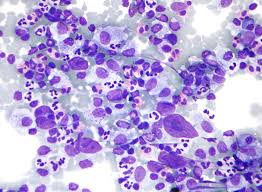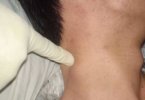
What's in this article?
What is Hodgkin lymphoma?
Hodgkin lymphoma is a type of lymphoma, a cancer that starts in white blood cells called lymphocytes. Lymphocytes are part of the immune system.
Cancer starts when cells in the body begin to grow out of control. Cells in nearly any part of the body can become cancer, and can spread to other areas of the body.
Symptoms of Hodgkin lymphoma
Hodgkin lymphoma signs and symptoms may include:
- Painless swelling of lymph nodes in your neck, armpits or groin
- Persistent fatigue
- Fever and chills
- Night sweats
- Unexplained weight loss as much as 10 percent or more of your body weight
- Loss of appetite
- Itching
- Increased sensitivity to the effects of alcohol or pain in your lymph nodes after drinking alcohol
Causes of Hodgkin lymphoma
Hodgkin lymphoma is caused by a change (mutation) in the DNA of a type of white blood cell called B lymphocytes, although the exact reason why this happens isn’t known.
The DNA gives the cells a basic set of instructions, such as when to grow and reproduce. The mutation in the DNA changes these instructions so the cells keep growing, causing them to multiply uncontrollably.
The abnormal lymphocytes usually begin to multiply in one or more lymph nodes in a particular area of the body, such as your neck or groin. Over time, it’s possible for the abnormal lymphocytes to spread into other parts of your body, such as your:
- bone marrow
- spleen
- liver
- skin
- lungs
Types of Hodgkin lymphoma
There are 2 kinds of lymphomas:
- Hodgkin disease (named after Dr. Thomas Hodgkin, who first recognized it)
- Non-Hodgkin lymphoma
These types of lymphomas differ in how they behave, spread, and respond to treatment, so it is important to tell them apart. Doctors can usually tell the difference between them by looking at the cancer cells under a microscope or by using sensitive lab tests.
Both children and adults can develop Hodgkin disease. This document discusses treatment in both groups.
Hodgkin lymphoma Risk factors
Factors that increase the risk of Hodgkin lymphoma include:
- Your age. Hodgkin lymphoma is most often diagnosed in people between the ages of 15 and 30, as well as those older than 55.
- A family history of lymphoma. Having a close family member who has Hodgkin lymphoma or non-Hodgkin lymphoma increases your risk of developing Hodgkin lymphoma.
- Your sex. Males are slightly more likely to develop Hodgkin lymphoma.
- Past Epstein-Barr infection. People who have had illnesses caused by the Epstein-Barr virus, such as infectious mononucleosis, are more likely to develop Hodgkin lymphoma than are people who haven’t had Epstein-Barr infections.
- A weakened immune system. Having a compromised immune system, such as from HIV/AIDS or from having an organ transplant requiring medications to suppress the immune response, increases the risk of Hodgkin lymphoma.
How is Hodgkin Disease Treated?
Treatment for HD typically depends on the stage of the disease. The main treatment options are chemotherapy and radiation. Radiation therapy uses high-energy beams of radiation to destroy cancer cells. Chemotherapy involves the use of medications that can kill cancer cells. Chemotherapy drugs may be given orally or injected through a vein, depending on the specific medication.
Radiation therapy alone may be sufficient for treating early stage NLPHD. If you have NLPHD, you may only need radiation since the condition tends to spread more slowly than classic HD. In advanced stages, targeted therapeutic drugs may be added to your chemotherapy regimen.
A stem cell transplant may also be used if you don’t respond to chemotherapy or radiation. A stem cell transplant infuses healthy cells called stem cells into your body to replace the cancerous cells in your bone marrow.
After treatment, your doctor will want to follow up with you on a regular basis. Be sure to keep all your medical appointments and follow your doctor’s instructions.






Leave a Comment